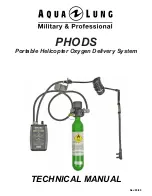
ABL77 Service Manual
Chapter 6: Replacements
6. Replacements
Overview
Introduction
This chapter describes the procedures for replacing lower-level components of the
analyzer.
Each procedure in this chapter is a stand-alone set of instructions for replacing
lower-level components of the analyzer. Within these replacement procedures are
instructional steps such as “Remove the analog board”. Refer to
Chapter 5,
Dismantling,
for detailed instructions on removing the higher-level components.
Refer to
Chapter 7, Re-assembly
, for detailed instructions on re-assembling the
higher-level components.
CAUTION:
Follow legal requirements and local rules for safe work practices with
chemicals.
WARNING/
CAUTION:
CAUTION:
Working with blood gas analyzers may result in contact with blood
remnants and with harsh disinfectants. During the various procedures wear suitable
protection gear (gloves, face protection, and protective body clothing), following
legal requirements and local rules for safe work practices.
CAUTION:
The gloves must be free of pinholes and preferably be puncture
resistant. Please consult the glove manufacturer for further information.
CAUTION:
If contaminated material comes into contact with any lesion on the
body, seek medical advice.
Decon-
tamination
The analyzer’s internal waste line is exposed to blood during normal use. This
includes the complete pathway from the black waste drain at the front of the
analyzer to the middle waste luer of the rear manifold. Due to this biohazardous
contamination, the analyzer should be decontaminated prior to any repair or
replacement involving the fluidic system. Perform the
Waste Line
procedure,
described in
Chapter 8
to decontaminate the waste line prior to servicing the
analyzer.
Important
Always establish an ESD protected area before removing a module from the
analyzer or exposing electronics to prevent damage to the electronics.
Some flat cable connectors are equipped with a locking device. Always press the
sides together before pulling the connectors to avoid damage.
Never use sharp tools for handling tubing to avoid damage.
Continued on next page
Rev. F
6-1
















































